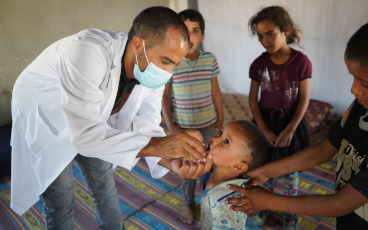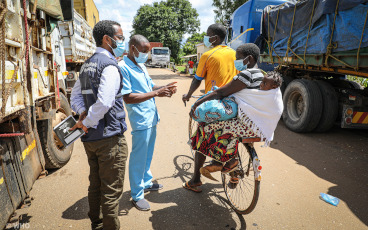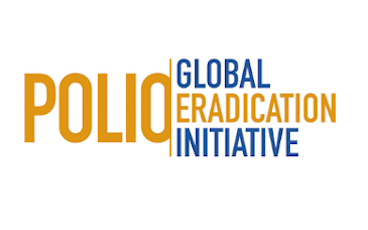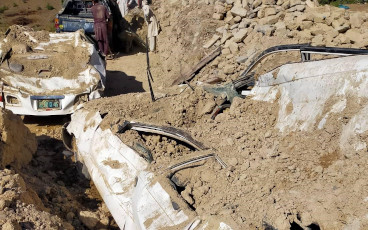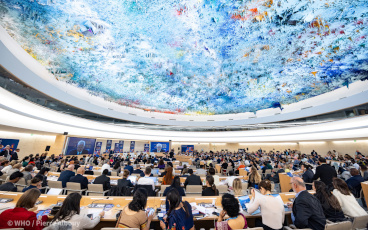Bangladesh introduces inactivated polio vaccine
The launch of IPV in Bangladesh demonstrates what can be achieved through strong integration of polio eradication and routine immunization
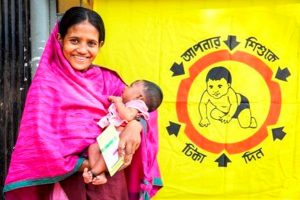
GAVI
On 21 March, the Extended Program on Immunization (EPI) in Bangladesh launched both the Inactivated Polio Vaccine (IPV) and the Pneumococcal Conjugate Vaccine into their Routine Immunization programme. With polio stopped in 2000 and 94% routine coverage by 2 years of age, Bangladesh has many lessons to share with other countries on how to provide strong protection against vaccine preventable diseases.
IPV Introduction in a Strong Routine Immunization System
EPI in Bangladesh is remarkable for the ownership felt for the program at all levels, from the Government to health workers to parents who actively seek out vaccines. This commitment is evident in the dual introduction for IPV and PCV, which enabled streamlining on training, logistics and the health workforce.
Movement around the country has been limited since January, due to road blockades for political reasons, giving the introduction a challenging backdrop. Innovative transportation techniques, the incredible commitment of staff and the power of the yellow EPI banner which shines out from every vehicle and denotes every EPI clinic made it possible to get the new vaccines to healthcare centres, despite the challenges.
Before any vaccine introduction, a cascade of improvements for the entire EPI system takes place. To accommodate two new vaccines into the system, international partners helped government to assess cold chain capacity, secure vaccine stocks, train all health workers and engage influential leaders. Dr Abdur Rahim, Program Manager of EPI at the Ministry of Public Health, explained: “Every time we introduced a new vaccine in the past few years, we saw an increase in overall coverage.” He hopes that this dual introduction will provide the necessary push to bring coverage to 90%.
With the addition of IPV and PCV, Bangladesh is now protecting children against 10 diseases. “This makes Bangladesh one of the model countries in South Asia, with many lessons to share with the rest of the world,” said Dr Jayantha Liyanage from WHO at the launch on March 21.
Polio’s Contribution to Bangladesh’s EPI System
Bangladesh’s historic success in stopping polio in 2000 set the foundation that enabled this introduction. The capacity of staff, lessons learned over many years of National Immunization Days (NIDs) and high community engagement all contributed to the strength of the system today, which is remarkable in a low income country with such a high birth cohort and many other public health challenges.
Bangladesh is an example of a country where routine immunization and polio eradication have worked in synergy for so long that the former now carries the latter. This process of synergy gained its strength from the way in which partnerships grew between the government, organizations such as WHO, UNICEF and Rotary International, and civil society organisations. The longstanding history of the program means that all stakeholders know their roles well, explains Dr N. Paranietharan, Head of WHO Country Office in Bangladesh. “There may be new challenges; however the public health approaches to respond to them remains the same.”
Bangladesh is an example of a country where routine immunization and polio eradication have worked in synergy for so long that the former now carries the latter.
Years of NIDs established and strengthened channels of communication, building all-important trust between the people and the EPI system. NIDs became festive occasions across the country, with Rotary and UNICEF doing everything they could to engage parents in the campaigns, with elephants, balloons, and music in the streets. “Just a generation or two ago, vaccine preventable diseases caused so many deaths, and now so few. This is incredible, visible change. When people saw vaccinated children staying healthy, it motivated the whole country,” describes Dr Abdur Rahim. “All walks of life have contributed to this program, so they all are committed to ensuring it remains strong and continues to improve.”
Bangladesh now faces the challenge of addressing inequity in coverage. Urban areas prove a particular challenge, where population movements, low levels of sanitation in slums and a less structured infrastructure need to be addressed.
Working for a Stronger Future
While polio has not been seen in the country since the end of the outbreak in 2006, the programme continues to play a role in helping to address the challenges of the entire system. “We are keeping our commitment to polio eradication strong, despite not having seen the disease for so many years. It is important for us to avoid the risk: as long as neighbouring countries are vulnerable to polio, awareness of the threat needs to be maintained,” explains Dr Paranietharan. “But the efforts aren’t just for polio. Polio eradication is so integrated that all the efforts are towards strengthening systems for routine immunization.”


